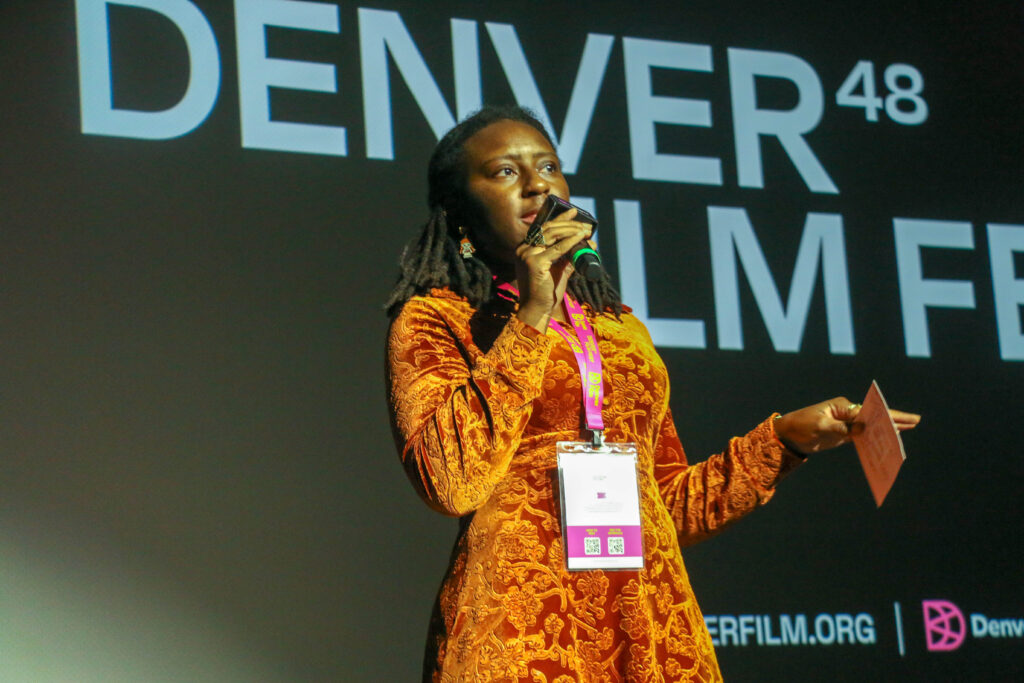Gus Van Sant brings ‘Dead Man’s Wire’ back home to Denver
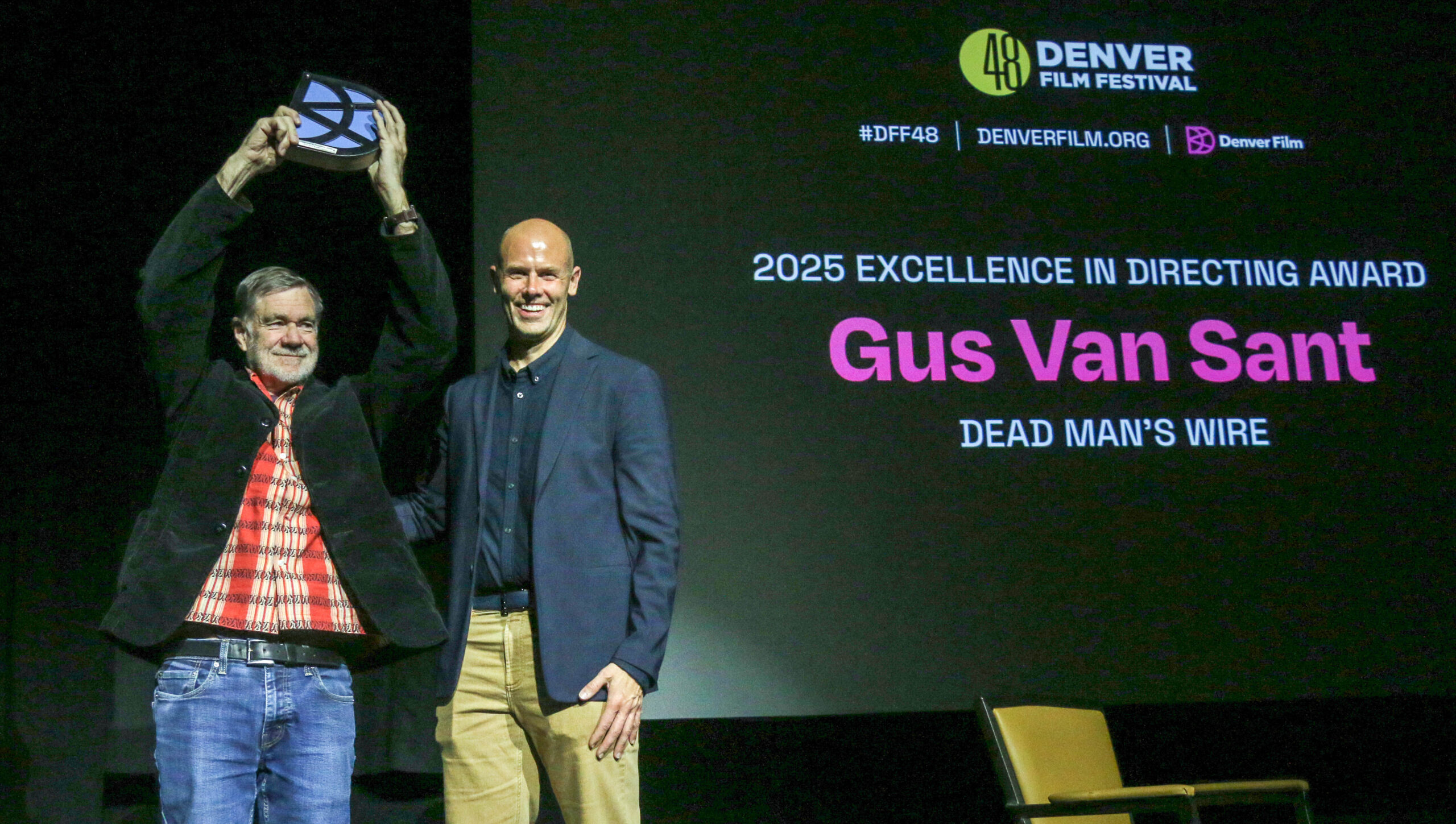
DISPATCH FROM THE DENVER FILM FESTIVAL • DAY 7
Denver both rightfully and a bit speciously claims many film stars for having spent at least slivers of their childhoods here. We talk a lot about itinerant Coloradans Amy Adams, Don Cheadle, Keri Russell, Tim Allen, Hattie McDaniel and Billie Eilish’s mom, among others. Just the other day, I was talking up “Star Wars” director Rian Johnson’s brief Colorado connection.
Not many realize that Gus Van Sant, one of the major independent filmmakers of the past half-century, is high on that list as well.
“Actually, I lived in Denver for the first six years of my life, on South Ivy Way,” Van Sant said Tuesday before accepting the Denver Film Festival’s 2025 Excellence in Directing Award at the MCA Denver’s Holiday Theater.
“I think back on Denver as kind of an amazing place. It’s where (beat icon) Neal Cassady came from, which appeared in all of the (Jack) Kerouac books and in some of (Allen) Ginsberg’s writings. So it’s a special place to me.”
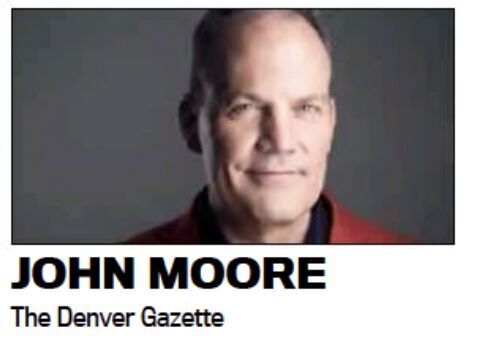
Van Sant was born in Louisville, Ky., in 1952. His father’s job as a traveling salesman for a clothing company brought the family to Denver within a few months of Gus’ birth. When the boy turned 6, they were off to Chicago. Then came Atherton, Calif.; Darien, Conn.; and Portland, Ore.
Van Sant hasn’t spent a lot of time in Denver since, but he passes through by car every now and then. “I would try and find the house that my family lived in, and then I would keep going,” he said. “My uncle owned a cherry farm in Fort Collins, so I would go there sometimes, too. That was very cool.”
Van Sant has said moving frequently gave him a sense of rootlessness that has influenced many of his films, which often focus on transient or outsider characters. He achieved critical acclaim with early indie hits like “Drugstore Cowboy” and “My Own Private Idaho,” then later enjoyed massive mainstream success with the breakout indie “Good Will Hunting.”
He sparked a firestorm of controversy in 2003 with “Elephant,” which took inspiration from the 1999 Columbine massacre by daring to imagine a fictional school shooting with killers who were detached, sexually fluid and motivationally ambivalent. The divisive film was called both morally irresponsible and artistically brave. And it won the highest prize at the Cannes Film Festival.

Van Sant, now 73, was in Denver on Tuesday to screen his latest signature tour de force, “Dead Man’s Wire.” It’s based on the unreal true story of a 1977 Indianapolis hostage crisis that captured the world’s attention for three days. It’s about Tony Kiritsis, who snaps after his bank calls in a predatory loan. When he takes the son of the mortgage company’s boss hostage, he turns into an unlikely folk hero to some of those watching along on the news. Kiritsis’ unhinged act tapped into widespread modern-day anxieties about economic injustice. He came out of it looking alternating like a nut job, a sex symbol, and a celebrity.
“Dead Man’s Wire,” filmed in Van Sant’s (real) Kentucky hometown, is tense, chaotic and at times uproariously funny, shot by Van Sant to look like it was made in 1977. He also coaxes career-making turns from Bill Skarsgård as Kiritsis and Dacre Montgomery (Billy Hargrove on “Stranger Things”) as the hostage.
And there is a delicious cast twist in the presence of Al Pacino as M.L. Hall, the craven president of the offending mortgage company. Yes, it is a direct homage to Pacino’s work in the similar, seminal 1975 bank-heist film, “Dog Day Afternoon.”
Well, eventually.
“It wasn’t predetermined,” Van Sant told me. But when the casting director suggested Al Pacino, Van Sant thought, well, “Perfect.”
“Both Al and Colman Domingo (who plays a local jazz radio DJ) were busy at the time,” Van Sant said. “But we got Al’s scenes down to where he could manage one day of shooting. And we had to shoot Colman’s scenes in two days. So it happened at the last minute with both of them. But it worked out.”
BOTH SIDES NOW
Van Sant has spent most of his career dancing on the small-budget side of the film world. The most expensive film he has ever made was his 1998 shot-for-shot remake of Alfred Hitchcock’s “Psycho,” at $60 million. “Dead Man’s Wire” cost $13 million.
“Yeah, this one was really cheap, so we could be freer with it,” he said. “The difference between a studio and a non-studio film is usually freedom. There’s just less of it the bigger the budget because there’s more expectations to have it go into the marketplace that they recognize. That’s why I haven’t done too many of them.”

CREEDE HAS ITS DAY IN THE CITY
Spoiler alert (if there can be such a thing for a documentary): The most powerful words uttered in the remarkably vast and thoughtful new doc “Creede U.S.A.” are the final four. When a seventh-grader who has spent life entirely at 8,800 feet declares: “I love it here.” Roll credits.
That is no ordinary statement, this is no ordinary town, and this is no ordinary kid. It’s a high-school junior named Lexy Mead – who, in fifth grade, came out as the first openly nonbinary resident in this tiny town of just 300 year-round.
And this is no ordinary doc. It shows with uncanny honesty and vulnerability how a band of 100 largely progressive, largely seasonal artists coexists with the surrounding, deeply conservative rural families who have made up the backbone of this rural mining and hunting mountain town for generations.
Read more: Could tiny Creede lead America out of its divide?
It’s a town that only survived the silver bust of the 1960s because a band of University of Kansas theater artists accepted an invitation from the local Jaycees to come here and start up a summer theater company in a desperate attempt to bring the town’s Main Street back to life. And it worked. For decades now, the Creede Repertory Theatre has been the largest employer in Mineral County. Making this a town whose rebirth is rooted in the necessary harmonious cohabitation of insistently progressive artists and bedrock MAGA Republicans.
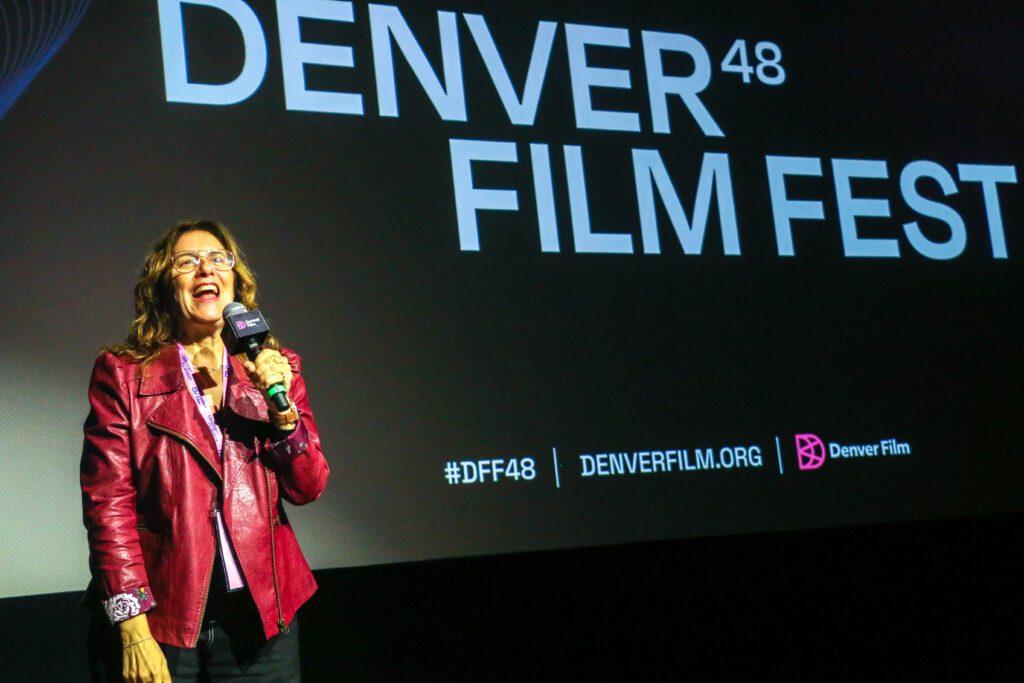
Sixty years later, with the nation mired in political division, Creede is a microcosm for every town of every size. Only here, where there are only 300 of you, you have no choice but to interact. Listen. Consider. Adapt. Then have a beer together. There are no silos.
Director Kahane Corn Cooperman came here in 2023 to learn how they make it work. She found her focal point in the remarkable Brittni Shambaugh Addison, a nursing mother of two biracial children and the director of the theater’s educational programming, which involves nearly every kid in the county.
When Addison joined the Creede School District Board of Education, she committed to the hard, lonely task of representing a humanistic point of view that runs in constant conflict with the majority over divisive issues like hiring an armed officer for the town’s only school, and whether the health curriculum should acknowledge the existence of nonbinary students like Lexy Mead.
The conflicts explored in the film are expectable. Absolutely nothing else is. Certainly not the residents who are brought to full-blooded and complicated life in a documentary that challenges your expectations at every turn. It turns out to be a shockingly hopeful piece of cinema, and a love letter to every endlessly surprising resident of Creede. Particularly Lexy’s quintessential cowboy dad, Dan Mead, who loves his child fully, and exactly as they are.
“No matter what color, what make and model anybody is, just give them respect,” Dan Mead said after the film. “That should be an easy thing for people to give. Just respect one another, no matter where they come from or what they are. We’re all human.”

And Greg Pearson, Addison’s primary adversary on the school board. He’s a Texan who moved to Creede to work as a wrangler at a guest ranch and stayed. He and Addison ideologically spar like prize fighters, but always with a shockingly consistent mutual respect. And when he shares a surprising detail about his own background, you are reminded that when you think you fully know a person, there’s a fair chance you don’t.
It all builds to this simple lovely ending that circles back to Lexy Mead and her best friend since birth, Waverley, yes, Pearson. Except for college, both plan to live their whole lives in Creede. One as a rancher, the other as a lifelong actor with the Creede Repertory Theatre.
“When we were thinking about what note to end this film on, I was actually feeling like it ends on Lexy and Waverly,” Corn Cooperman said. “It ends on a young girl from a conservative family who’s going to run the family ranch someday, and a non-binary kid who wants to be an actor. And that’s the future of Creede. They are always going to have these fundamental differences, but they know each other as human beings. And I think it is hopeful for our future that they want to stay there.”
Lexy found the end to be “really powerful,” they said. “I’ve gone through some really hard things in Creede, but everyone being there to support me and help me go through it just makes me want to be there for the rest of my life. And yeah, people are going to disagree on stuff, but at the end of the day, everyone’s there for each other. I really do love living in Creede. That’s such a powerful sentence for me to say – and it just means a lot, because it really is true. If you go to Creede, you’re going to love it. There’s nothing to not love about it.”
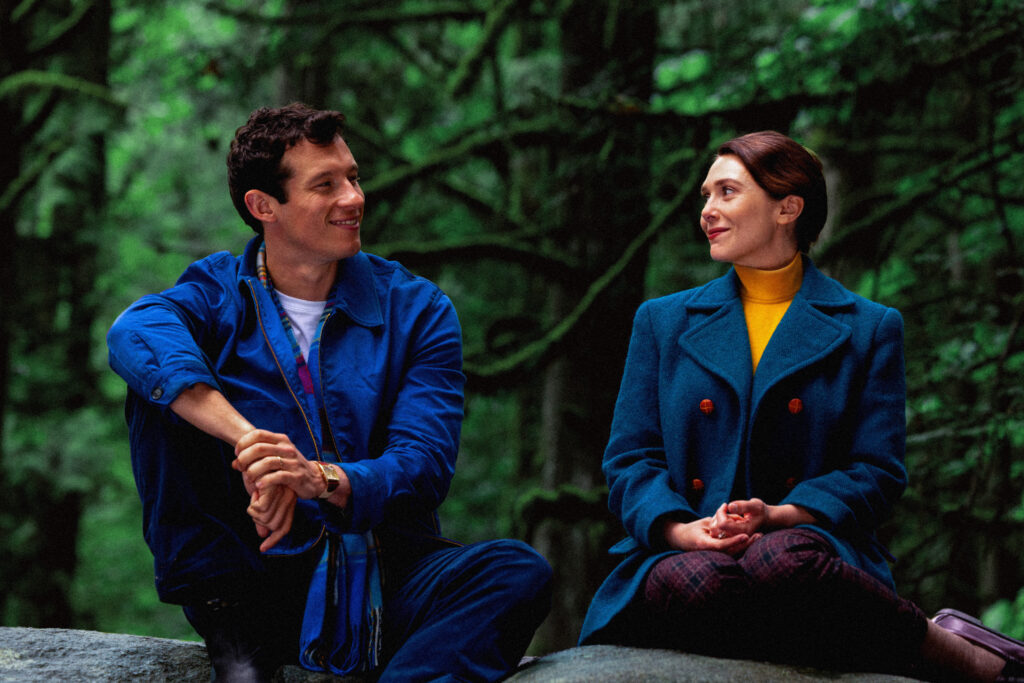
SCREENING OF THE DAY
Did you happen to catch Miles Teller just hosting “Saturday Night Live”? He’s starring in the crowd-pleasing love triangle “Eternity.” In an afterlife where souls have one week to decide where to spend eternity, Joan (Elizabeth Olsen) is faced with the impossible choice between the man she spent her life with (Miles Teller) and her first love (Callum Turner), who died young and has waited decades for her to arrive. 7 p.m. tonight (Thursday) at the Holiday Theater

WHAT’S HAPPENING TODAY?
A slight breather, with no in-person appearances before the blitz of the final weekend begins on Friday. Today is a day to support Colorado’s filmmakers by seeing the short documentaries package at 10:30 a.m., and/or the short narratives package at 7 p.m., both at the Sie FilmCenter. You also have a second chance to see the big-buzz Charlie Polinger film “The Plague,” about 12-year-old bullying, at 7:15 p.m. at the Sie.
DISCOUNT TICKETS
Each day, Denver Film is designating a few films or events that can be had for $5 when purchased in person. Box offices open 30 minutes before the first screening of the day.
Thursday’s $5 films or events:
• ”My Father’s Shadow,” 1:15 p.m. at the Sie FilmCenter (Nigeria and two others)
• ”The Golden Spurtle,” 3 p.m., at the Holiday Theater (U.K. and Australia)
• ”Natchez,” 4:15 p.m. at the Sie FilmCenter (U.S.)
TICKETS AND INFORMATION
Go to denverfilm.org
MORE OF OUR DENVER FILM FESTIVAL COVERAGE:
• Our interview with Delroy Lindo
• Here are five films you don’t want to miss
• Spotlight on Colorado films like ‘Creede U.S.A.’
• Daily Dispatch from the Denver Film Festival: Oct. 31
• Daily Dispatch from the Denver Film Festival: Nov. 1
• Daily Dispatch from the Denver Film Festival: Nov. 2
• Daily Dispatch from the Denver Film Festival: Nov. 3
• Daily Dispatch from the Denver Film Festival: Nov. 4
• Daily Dispatch from the Denver Film Festival: Nov. 5
MORE PHOTOS
